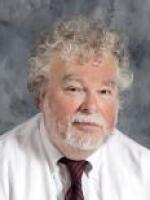Looking over future years to 2040 or 2050, what will this region look like? That depends, according to a study being conducted under the name One Region Forward. The many groups and agencies involved in the project are coming closer to the end of the study and some conclusions about where the region is going, each one leading to a different region decades down the line. The study looks at what could happen here if the region decided on "sprawling smarter" or focusing back to the city.
Either choice leads to results on issues from public transit proximity to new homes to how much farmland is turned into housing sites.
There is also the issue of how much money there will be to implement any recommendations and keep up the transportation links which need maintenance.
Hal Morse, director of the Greater Buffalo-Niagara Regional Transportation Council, says transportation is a key factor to residents on decisions.
"Rebuild our infrastructure and grow in those places. Make the most efficient use of the infrastructure we have and then look at overall mobility. So, it's not necessarily just in cars, but cars, public transportation, bicycles and walking, too. Increasingly, people are looking at more cost-effective ways of transportation. Can they live in an environment where they can walk to the store?," Morse said Tuesday night during a meeting in the Minnie Gillette Auditorium of the ECC City Campus.
Some choices would lead to nodes of densely populated communities, ideal for public transit.
"If you think about a region of villages and towns and cities, some would say that's sprawl. You should put it all back to the city. On the contrary, if you really concentrate on vital urban centers at any scale, towns, villages and others, then you are going to get a kind of land use pattern related to it. It's walkable. It's close in. You're going to live where you work," said Robert Shibley, dean of UB's School of Architecture and Planning
Some of the decisions are beyond the planners since Washington is cutting back on money for new roads and bridges at a time when there is increasing technology and increasing investment in preserving current roads and bridges.


